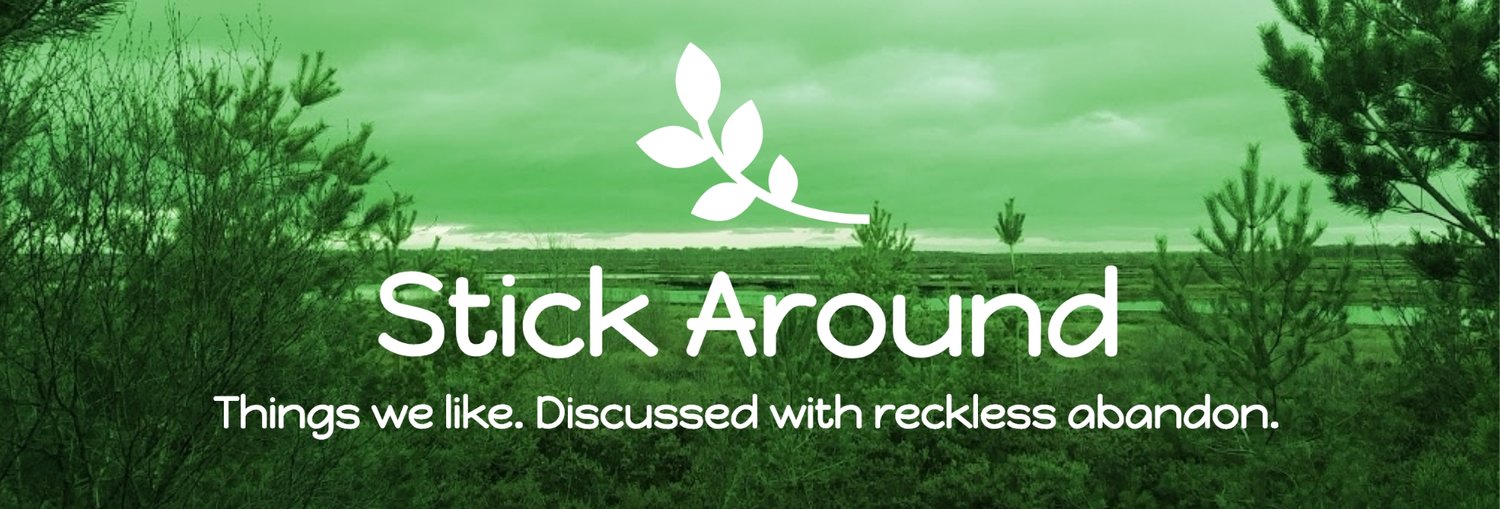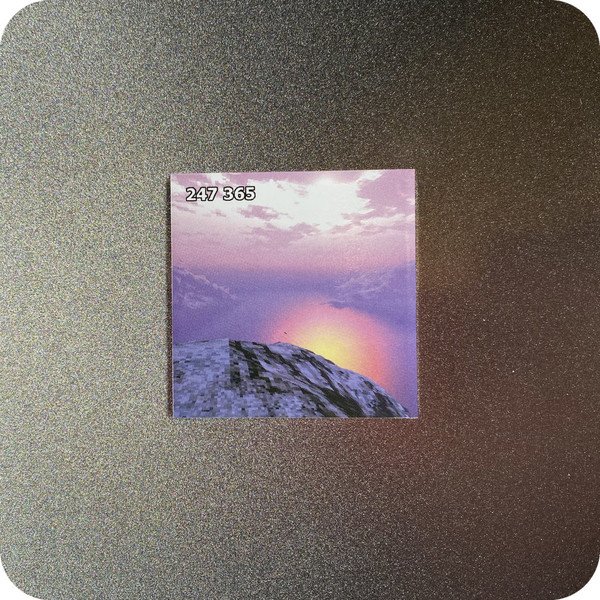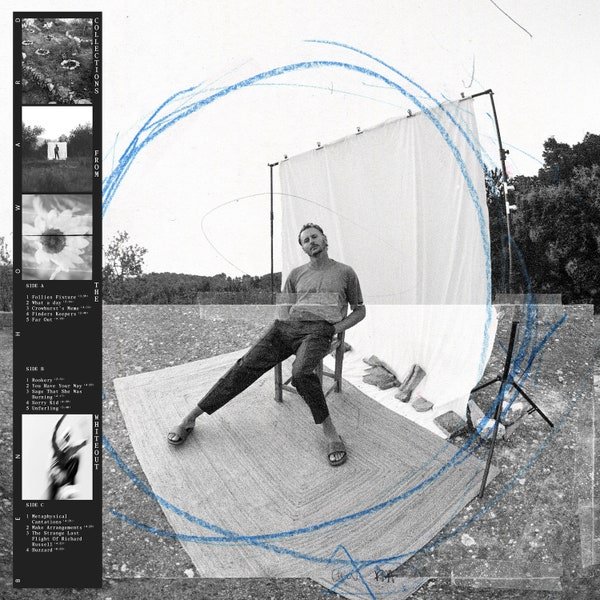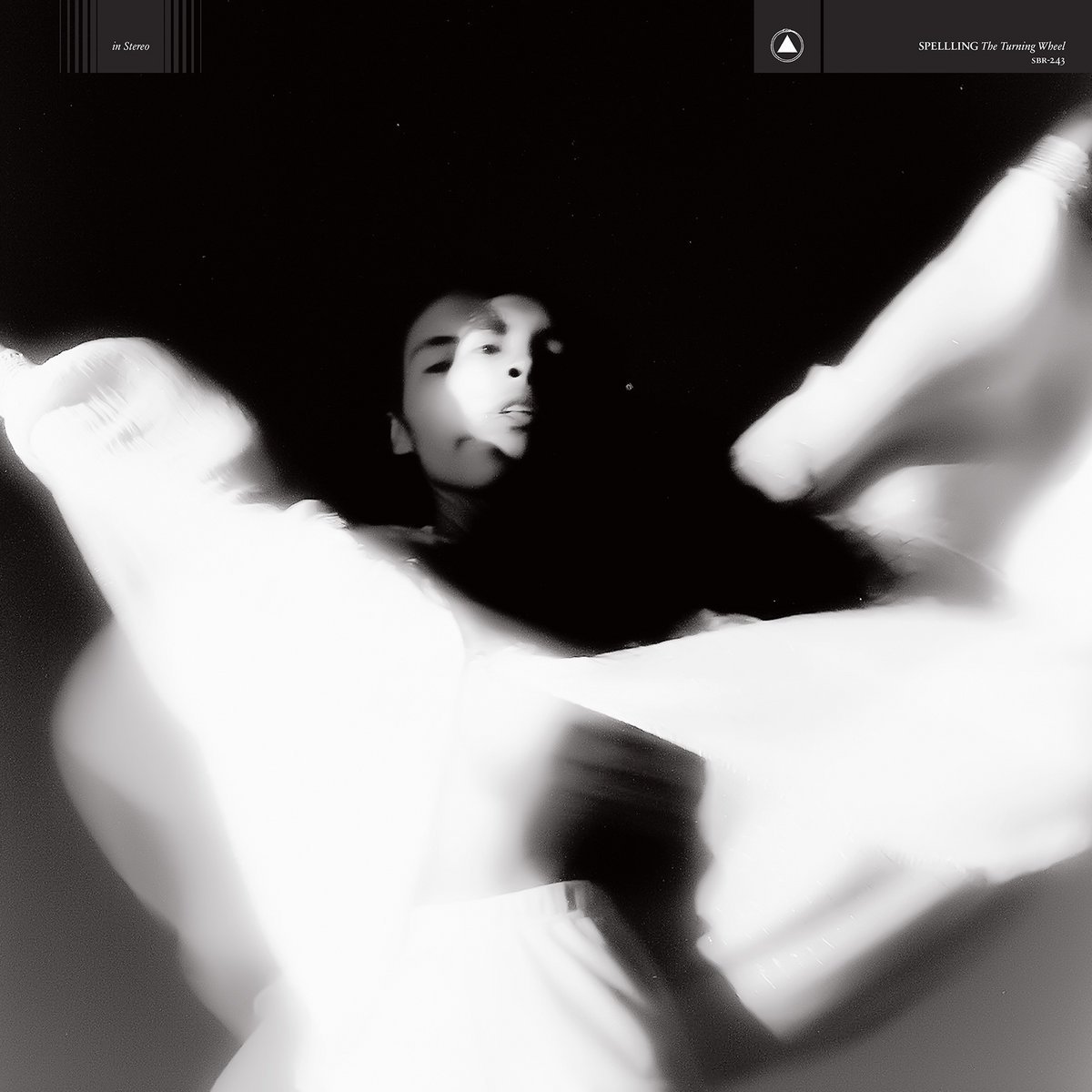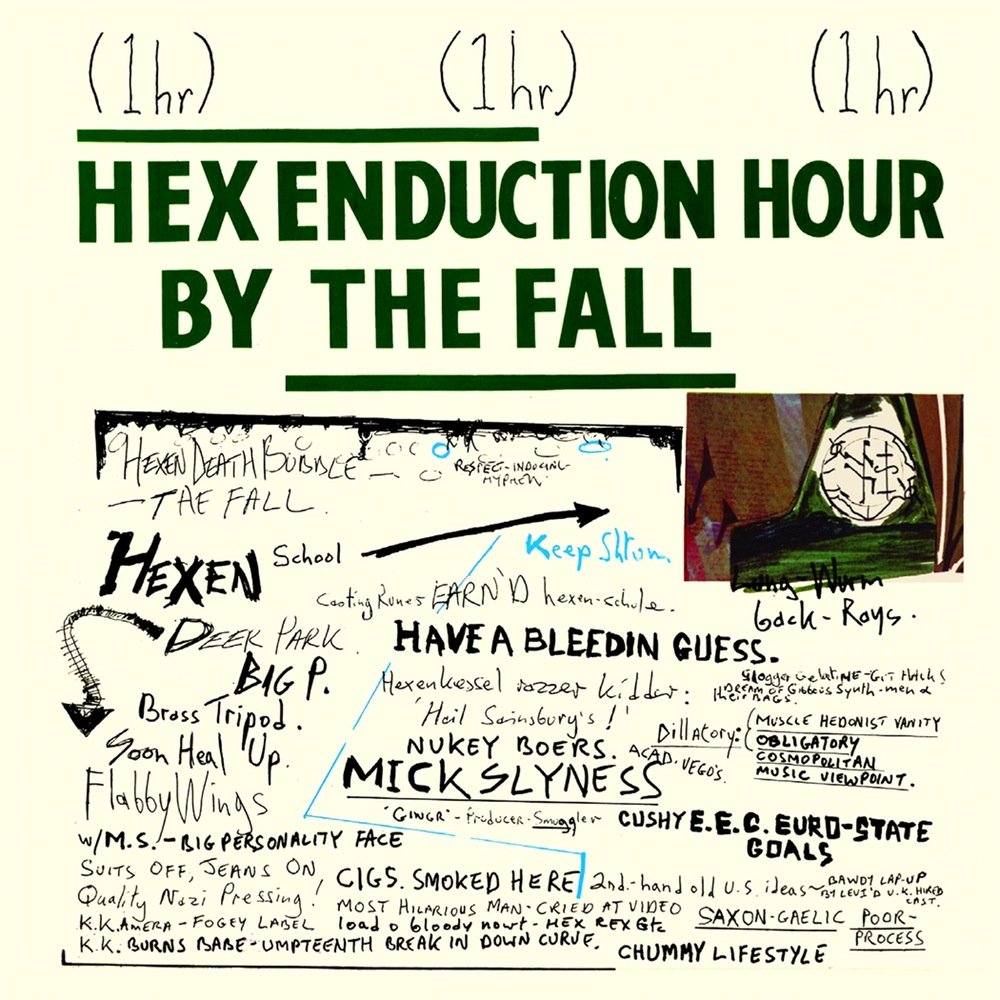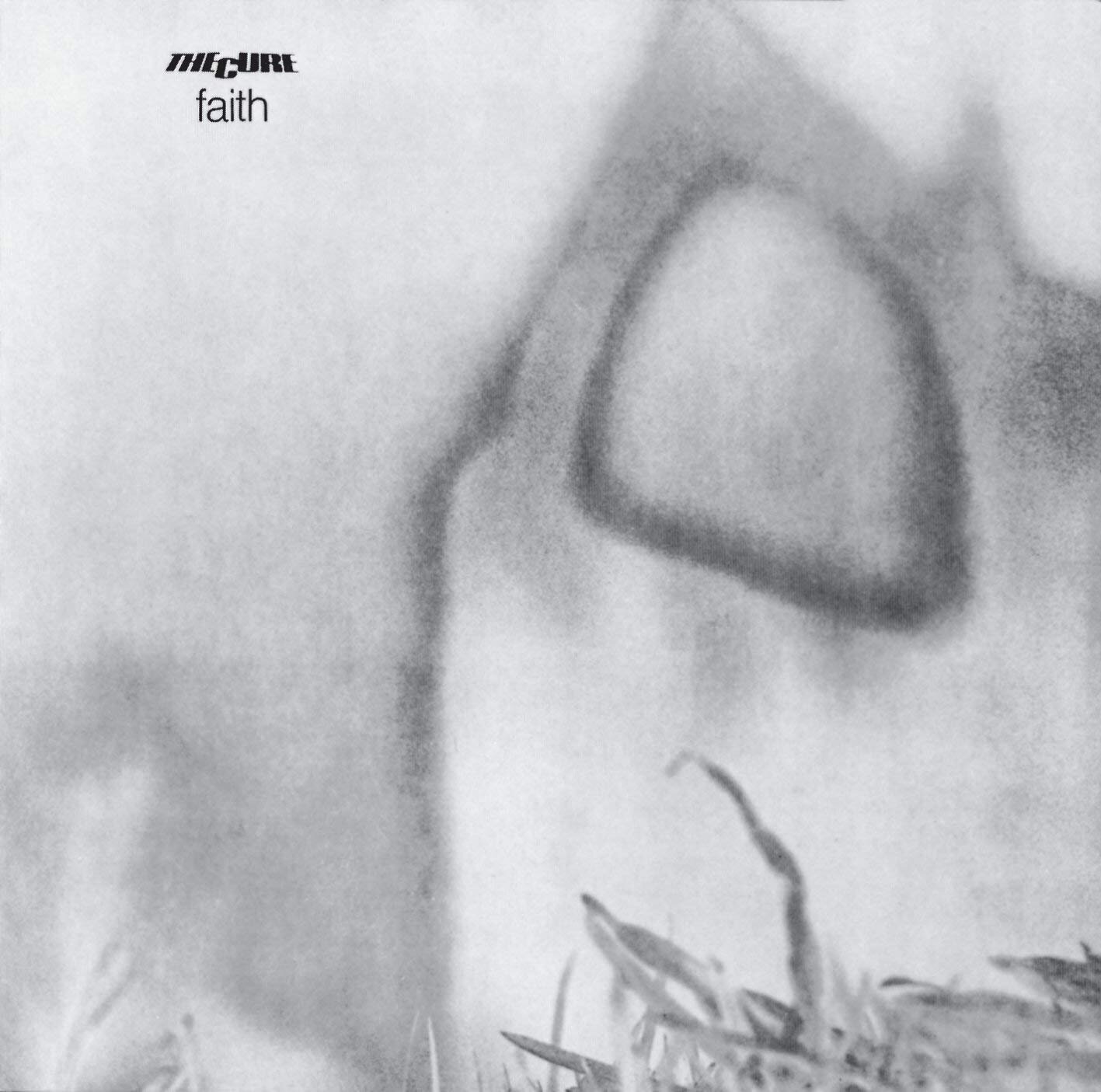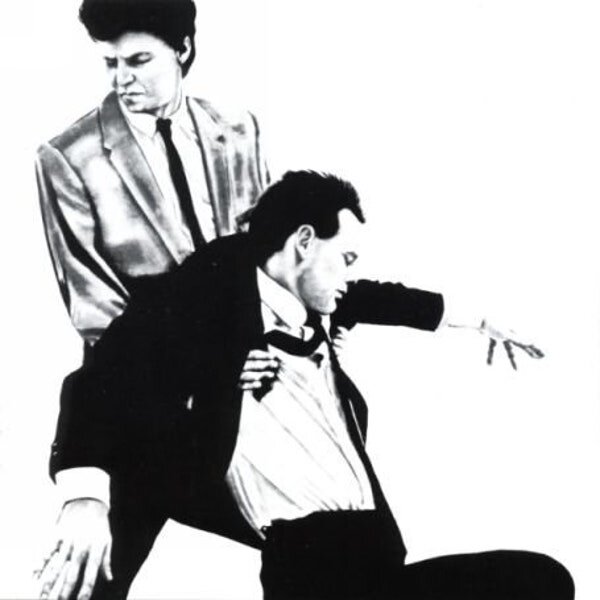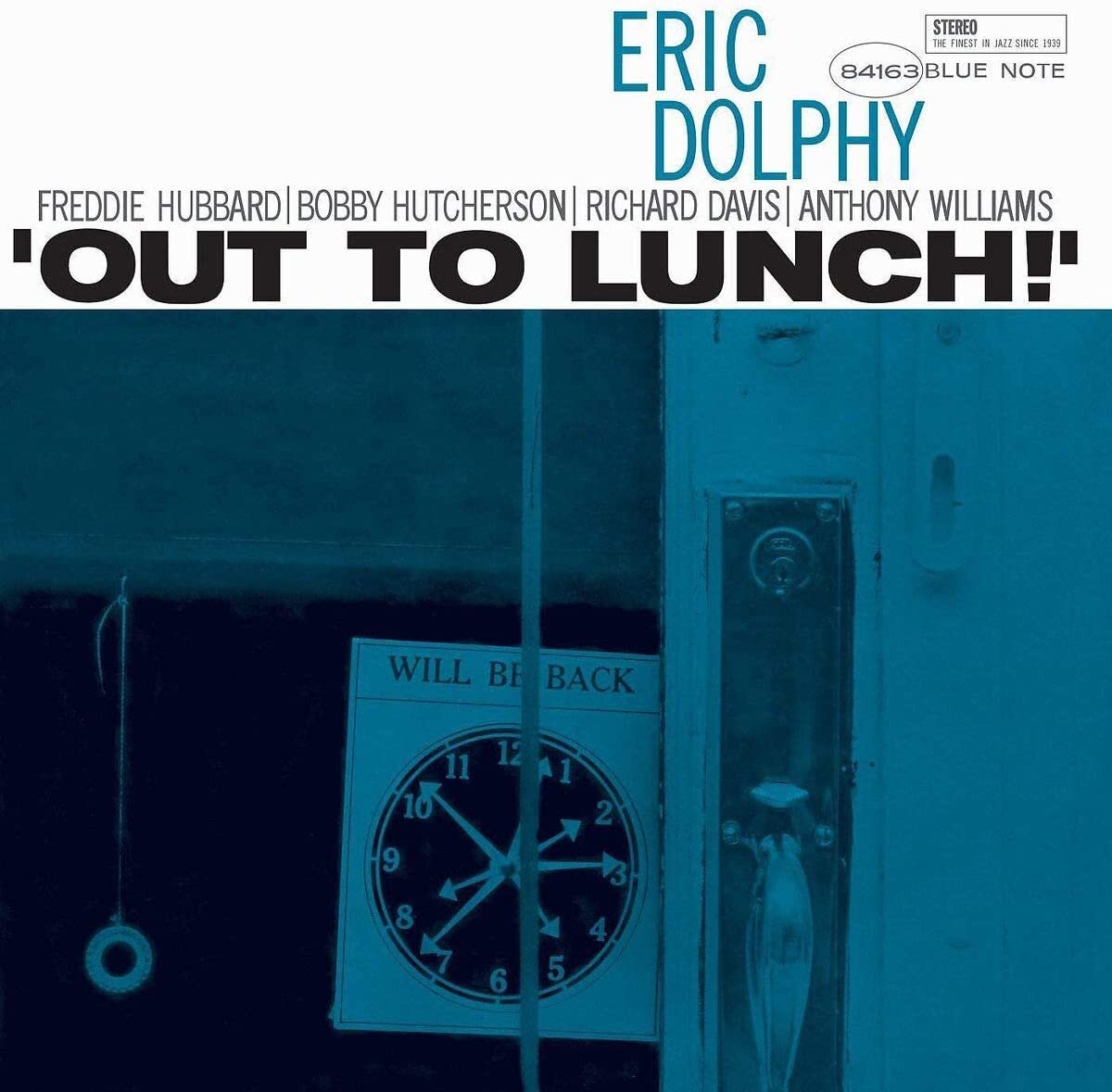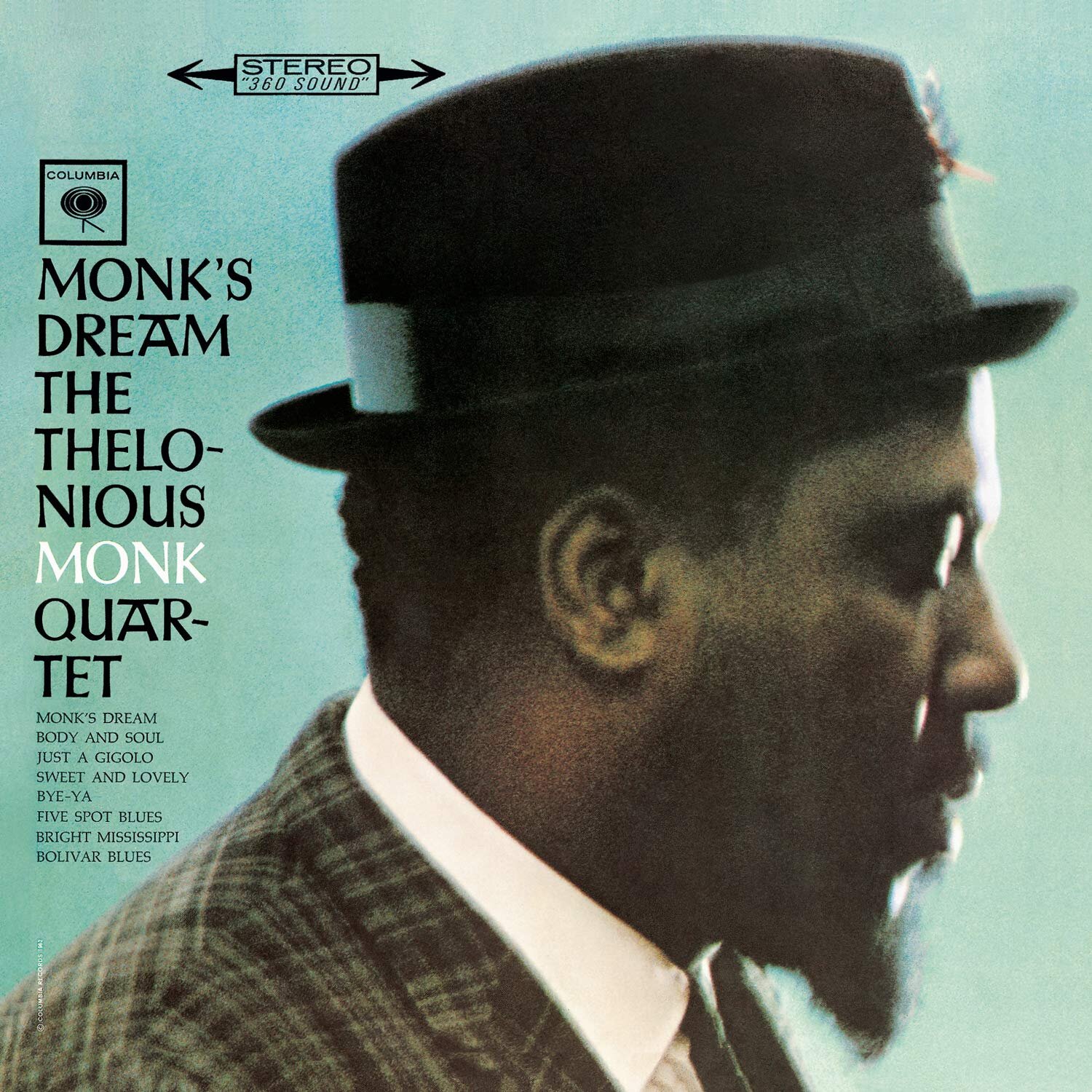2021 - Clive's Top Albums of Every Year Challenge
As I march on with my challenge of deciding on my favourite albums from every year from 1960 to the present day, I also need to keep up with the present day. As such, here’s my favourite albums of the year just gone, 2021. I can’t be bothered to summarise the year because let’s be honest, it wasn’t all that great, and it feels like that massive boat getting stuck in the Suez Canal sums it up pretty well. The music, which is luckily what we’re here to talk about, was top notch however. If you’re more interested in lists for other years gone by, all the ones I’ve done so far are on the index page here.
I’ve made sure to include the 2021 top 10s from rateyourmusic.com ( a user music rating website), albumoftheyear.org (their aggregation of all critic top album lists), Pitchfork (my favourite online music magazine) and Anthony Fantano of the Needle Drop (one of my favourite music reviewers). As these lists only come out towards the end of 2021, I’ve taken January to get through them, making sure I’ve reviewed all the albums contained on them. Should you care to see what those top 10s were, I’ve listed them below this article.
Of course, I’ve also included anything else I’ve listened to this year that I’ve liked. So with a total of 37 to get through, let’s get cracking.
37. Whole Lotta Red
Playboi Carti
This is technically a 2020 release but presumably included on lots of 2021 lists because it came out on the 25th of December and therefore about 3 weeks after most publications do their ‘end of year’ lists. I’ll spare my rant on that for another time. Whole Lotta Red is Playboi Carti’s second album featuring guest appearances from Kid Cudi, Future and Kanye West - who was an executive producer on the album. 24 tracks and over an hour long, the album is a behemoth, and that to me is what holds it back.
Carti’s vocal style is more concerned with fitting into a tune than necessarily saying anything, but his style is rather singular. His croaks on Stop Breathing cut right through, and provide one of the year’s more interesting vocal performances as various timbres rattle left to right, over the kind of rumbling bass-heavy track that dominates much of the album. The tracks are immediate, effective, but rather repetitive both within themselves and from track to track. The beats are so similar at times that I’m not sure if it’s a new song at all, and by 60 minutes that gets rather old, and even boring. There’s some good stuff here, but not an hour’s worth of it.
Song Picks: Stop Breathing, M3tamorphosis
5.5/10
36. kick iii
Arca
kick iii is Venezuelan singer and producer Arca’s sixth record and third entry in the Kick quintet. Arca herself describes the album as "a portal directly into the more manic, violently euphoric and aggressively psychedelic sound palettes in the series” which describes it as well as I ever could. There’s a sense of manic violence to it that makes the album quite an aggressive listen, and certainly not the most accessible. Like its enigmatic cover, taken by Frederik Heyman, it takes a while to absorb what the hell is going on, but once you do you’re rewarded with something singular and memorable.
kick iii is a demanding listen, and not something I’ll be putting on too regularly, I find it feels a bit too splattered for my tastes, without anything particularly to hang on to. That aside though, I can’t argue that its remarkably cohesive for how manic it is, and has a sound very much its own.
Song Picks: Intimate Flesh
6.5/10
35. 247 365
Naked Flames
Naked Flames’ second album is a whirlwind of reflective energy. 247 365 bounces in from the stratosphere, bleeping and sparkling away over the top of gently pounding drums and hyperactive bass grooves, and it never lets up. I’m not sure the lofi production adds all that much, and I think a cleaner sound would have helped, but this is still a favourite when I need to get something done.
Song Picks: 247 365
7/10
34. New Long Leg
Dry Cleaning
Dry Cleaning were one of the rare bands I saw live in 2021, where their post-punky, atmopsheric sound went across really well, though Florence Shaw’s spoken word vocal style got somewhat buried in the live mix.
The band’s debut album, New Long Leg, was one of the most talked about albums of the year over here in the UK, and certainly on my favourite radio station, BBC Radio 6. The band creates a very unique sound with Tom Dowse’s superb post-punk guitar work, where evocative riffs seem to fall to him from the sky; and Shaw’s spoken word, almost boredly mumbled vocals. It’s the vocals that will make or break the band for people I imagine, where you’ll either love the juxtoposition they create with the post-punk instrumental backing, or find them unengaging. I lie somewhere in the middle. I really like the whole ‘vibe’ the band gives off on this record, but I feel Shaw’s lyrics aren’t quite engaging enough to work with her deliberately deadpan delivery. When the lyrical content works with her delivery style, as on the detached Scratchcard Lanyard, I love it, but at other times I can feel the album drifting away from me as it fails to pull me in.
Song Picks: Scratchcard Lanyard, Leafy
7/10
33. Daddy’s Home
St. Vincent
Annie Clark’s sixth album as St. Vincent is inspired by her father’s release from prison in 2019. Daddy’s Home is St. Vincent leaning into 70s rock, but with a style very much her own. The elaborate productions here sound vintage and whisky drenched. Clark’s vocals teeter on the edge of hinged and unhinged, and the whole thing feels like a slightly seedy and lively basement bar.
There’s plenty to love here, such as that peppy Wurlitzer on Pay Your Way in Pain, a song that sinks into an almost groovy chorus for it’s final 30 seconds. The Wurlitzer makes plenty of other prominent appearances on the record, something I personally am a fan of, including its key place in the title track’s unique sonic bedding. I also like the classic feel to the album, something encapsulated in the guitar solo that closes the downtempo Live in the Dream.
Daddy’s Home is the type of album that it’s very hard to get bored of. There’s so much thought that’s gone into creating instrumental depth and atmosphere, that you notice new things on every listen. It completely nails a mood, which I always appreciate in an album, even if it hasn’t totally grabbed me.
Song Picks: Pay Your Way in Pain, Daddy’s Home, Live in the Dream, …At the Holiday Party
7/10
32. For the First Time
Black Country, New Road
For the First Time made quite a stir over here in the UK, with many of my friends becoming rather obsessed with the band’s unique blend of post-punk, math-rock and jazz elements. It was nominated for the Mercury Prize.
The London band’s debut is a remarkably mature, considered affair, with opening track Instrumental showing the band’s instrumental prowess and lack of care for scaring anyone off who might be averse to anything a bit too experimental. Isaac Wood’s vocals blend the tortured screams of La Dispute and the only slightly less tortured mumbles of mewithoutyou, showing as much dynamic range as the music itself. The songs are generally free from more common song-structures, and tend to take the form of longer form, building pieces that often don’t reach the crescendo they allude to earlier on. An exception to this is Science Fair, where the crescendo definitely does happen as Wood’s scream of “there’s black country out there” is followed by howls of saxophone and mashed guitars.
I like For the First Time a lot; it’s endlessly creative, clearly very carefully thought out, and also emotionally affecting at points. However, I can’t help feeling at times it’s trying to be a little too clever for its own good, and there’s a sense of pretentiousness to the whole thing that holds it back for me, and means it lacks soul somehow. I think that’s just a personal response, but hey, this is my personal list.
Song Picks: Science Fair, Sunglasses, Opus
7/10
31. Call Me If You Get Lost
Tyler, the Creator
Tyler, the Creator’s sixth album. The beats be chill, the rhymes be ill, and the sonic textures are lovely.
Song Picks: MASSA, Sweet / I Thought You Wanted to Dance, RUNITUP
7.5/10
30. A Beginner’s Mind
Sufjan Stevens & Angelo De Augustine
A Beginner’s Mind was recorded by Stevens and De Augustine in a cabin where they watched movies for inspiration. I’ve always thought about doing an album of songs inspired by individual movies, they’ve beaten me to it, bastards.
I have to confess here that I’ve not heard much of Sufjan’s stuff so I’m somewhat of a novice on that front - something I know will be rectified once my album of the year challenge gets far enough along (though I’m some way off, having got to 1984 at time of writing).
A Beginner’s Mind is lovely. Sufjan’s whispered melodies are as warm as ever, and they work well with De Augustine’s higher register to create somewhat of a king sized and comforting musical mattress. Musically the palate is fittingly smooth and wholesome, and keeps things just interesting enough without attempting anything particularly novel. It’s all very pretty, and holds up to both background and active listening sessions admirably.
Song Picks: A Beginner’s Mind, Murder and Crime
7.5/10
29. Donda
Kanye West
After multiple delays while Kanye lived at the Mercedez-Benz stadium in Atlanta, the album finally dropped in August, but of course, Kanye claimed that Universal had released it without his approval. As messy as its release, Donda goes on for an intimidating 108 minutes. It’s chaotic, somewhat diluted and disjointed, and yet there’s something magnificent about how impenetrable it can be. There’s plenty of evidence of Kanye is capable of, Off the Grid sounds like an earthquake, Hurricane is minimalist but hits like a storm and there’s a My Beautiful Dark Twisted Fantasy level of magnitude to a lot of the tracks here which I really like. That said, the album is messy, some of the lyrics are lazy - that Messi line anyone? - and there’s nothing quite as mindblowing as we were used to from Kanye in the previous decade.
All four of the ‘part 2’s’, especially considering the controversial nature of their features, add nothing to the album, and only hold it back by making it too long. That - not inconsequential point - aside though, Donda feels like an unflinching look into Kanye’s mind, warts and all, and for that I think it deserves a little more praise than it’s got.
Song Picks: Off the Grid, Hurricane, Come to Life
7.5/10
28. Fatigue
L’Rain
Taja Cheek’s second album as L’Rain is one of those albums that is pretty difficult to define by genre, so people just call it avant-something, usually avant-pop.
Fatigue feels like a dream, turn the volume up, close your eyes, and you’ll be hovering somewhere between time and space itself, in a place full of lavish, atmospheric sounds, with beautiful melodies coming from all kinds of sources. It feels like swimming through a musical ocean, a description that is particularly apt for the beautiful Blame Me, which is coated in so much reverb it makes you question your own existence.
Fatigue is an oddball, it’s both completely gorgeous and a bit forgettable. I don’t think the short running length helps on the latter. It seems like the kind of album that’ll completely blow me away if I listen to it at the right moment, I just haven’t found that moment yet.
Song Picks: Blame Me, Take Two
7.5/10
27. Mercurial World
Magdalena Bay
The American synth-pop duo’s debut album features a whole variety of influences, and is perhaps best compared to a softer Grimes. Mica’s multi-tracked vocals are thick, warm, and melodic while never being particularly emotional. The production on the tracks is top-notch, with thick synths and bouncy drums creating a very inviting and enjoyable sonic palette.
Although the album doesn’t have any obvious themes to hold it together, it has a very coherent sound, with tracks flowing nicely from one to the other. Mercurial World is a great display of pop songwriting from front to back. If I had to criticise it I’d perhaps say that it lacks a certain unique character to make it particularly stand out, but there’s no doubt this is a well-executed and thoroughly enjoyable album.
Song Picks: Mercurial World, Dawning of the Season, Something for 2
8/10
26. Blood Bunny
Chloe Moriondo
I heard I Eat Boys played by Iggy Pop on Radio 6 and was pulled in by its great melody, dark lyrics, and just general feel. So I thought I’d best give her album a spin. Moriondo is an 18 year old Youtube star, with over 3 million subscribers, and this is her second album.
Blood Bunny has plenty of humour, including songs about getting high and discovering just how big Manta Rays are after an internet search, and the aforementioned I Eat Boys where she sings about luring boys into her basement and eating them. However, it’s also an album about being yourself: Opener Rly Don’t Care and the later Slacker being great examples of this. Moriondo has a Taylor Swift-esque knack for catchy melodies, and though the production is nothing particularly inventive or fresh, it is clean and atmospheric, giving songs like GIRL ON TV a real added weight, and turning the simple I Want to Be With You into a genuine stadium banger. This is pop with a dash of punk, and it’s one of the most enjoyable, sing-alongable albums of the year.
Song Picks: I Eat Boys, GIRL ON TV, I Want to Be With You
8/10
25. Sometimes I Might Be Introvert
Little Simz
The British rapper’s fourth comes in at a whopping 65 minutes, and it’s ambitious not just in length but in the sheer level of detail to each production, which is as smooth as silk, with gorgeous instrumental touches to accompany the plethora of chilled, funky beats and basslines.
Little Simz raps with an enviable confidence, one that cuts through even when her style barely rises above the volume of a conversation. She talks about personal issues, racism, fathers, and above all success through hard work. One listen to SIMBI (which is incidentally her first name), makes it clear that Little Simz was always going to make it one way or another. She raps about the level of dedication reserved to those who feel they have a right to be heard, and - in Little Simz’s case, she’s right, with a flow that is an absolute joy to listen to combined with astute lyricism.
On very few occasions over the album’s significant running length, Little Simz’s lyrics feel a little forced, and the interludes feel skippable after a listen or two. Those issues aside though Sometimes I Might be Introvert is one of the most straight-up enjoyable hip-hop albums I’ve heard for a while, with quality tracks from start to finish, production that sounds like a million dollars (in a good way), and the rewarding feeling that someone who truly deserved to break through with her last album, has flourished. It’s hard to imagine she doesn’t have a masterpiece up her sleeve soon, but this isn’t quite it.
Song Picks: Introvert, Woman, Point and Kill, Rollin Stone
8/10
24. Heaux Tales
Jazmine Sullivan
Technically her first EP, but coming in at a very album length of 32 minutes it could easily be seen as her fourth album instead. Heaux Tales was named album of the year by Pitchfork.
An honest and personal hip-hop album, Heaux Tales is about women being proud of who they are, of their sexuality, and their femininity. Heaux Tales is a powerhouse of an album, and a bold statement of female empowerment. It makes a mark not only with its message, but also its slick production and great songwriting. Sullivan’s vocals are pitch-perfect, while still containing plenty of character, and her performances are powerful and yet vulnurable in a way that only someone with supreme confidence in her craft could muster. The album is a little too overtly sexual for my tastes, and that’ll impact how often I rerurn to it for sure, but I respect that is very much a personal thing, and that this album achieves what it sets out to do pretty spectacularly.
Oh and Lost One is gorgeous.
Song Picks: Put It Down, On it, Lost One, The Other Side
8/10
23. Sinner Get Ready
Lingua Ignota
Lingua Inota’s fourth album is a vocal powerhouse, the imagery is less satanic than her previous album Caligula but no less religious in content and sound. The whole thing sounds like a visit to some culty church, where Kristin Hayter sings with an otherwordly power and accuracy over the top of the raucous pounding of instruments bouncing off the ornate walls.
Sinner Get Ready is very challenging, and I felt my body bracing to get through certain sections - the doom-laden organ sound on the opening trackTHE ORDER OF SPIRITUAL VIRGINS for example - but it’s ultimately worth it, even if I can’t see myself returning to it too often. Hayter’s vocal performance is astounding, full of drama, variety, and moments of pure brilliance, and the musical bedrock formed by Appalachian folk instruments accompanies the organ perfectly, creating a dark, doomed atmosphere. Sinner Get Ready absolutely isn’t for everyone, but Hayter’s ability to craft albums that sound so unique and important is remarkable, and I’d say this is essential listening for anyone interested in the pushing of musical envelopes.
Song Pick: THE ORDER OF SPIRITUAL VIRGINS, MANY HANDS, MAN IS LIKE A SPRING FLOWER
8/10
22. Collections from the Whiteout
Ben Howard
Howard’s fourth album sees him turning to a more electronic sound, something presumably somewhat forced by his lockdown isolation.
Collections from the Whiteout is meandering, but it’s not the kind of meandering where you’re lost and everything is so grey that no destination appeals more than another, it’s the kind of meandering where everything is so quietly bursting with beauty, that an aimless wander is the only way to soak it all in. It doesn’t hit me as hard as the excellent Noonday Dream, leaning a little too much into the steady and calmer parts of that record, but it’s still as gorgeous and earthy as that forest on the hill.
Song Picks: What a Day, Follies Fixture, Rookery
8/10
21. Screen Violence
Chvrches
The Scottish band’s fourth album does nothing unexpected, but refines what the band do so well yet further.
Lauren Mayberry’s vocals soar even more than usual on this record, as she crafts dramatic melodies that punch through the dense productions with inspirational power. Mayberry’s lyrics are as personal as any from the band’s previous albums, with songs of broken relationships, deaths, and struggles with fame and society’s expectations. Iain Cook and Martin Doherty’s production is as maximalist as always, though with a taste for a few frequency filling instruments rather than many thinner ones to achieve a similar effect. The songs sound bigger than they ever have - no mean feat - and it’s hard not to be swept away by the album’s epic sound. Some of the melodies are starting to sound familiar here, and it wouldn’t hurt to have the odd song that doesn’t sound as if the planet depends on it, but this is another thoroughly enjoyable, danceable, singable and emotional cannonball of an album.
Song Picks: Violent Delights, How Not to Drown, Nightmares
8.5/10
20. SOUR
Olivia Rodrigo
Rodrigo’s debut album has been one of the year’s most commercially successful, and it’s easy to see why. Packed front to back with punchy bangers swarming in catchy melodies, it also features vocal performances from Rodrigo that aren’t afraid to include imperfections for the sake of emotional honesty.
There’s punk rockers like the opening brutal, slower ballads like traitor, and straight-up pop gems like good 4 u, one of the year’s most recognisable singles with its Paramore-esque chorus. There really isn’t a song here that couldn’t be a hit single, and that’s no mean feat.
SOUR isn’t afraid to sound like an album written by a 17-year-old and that’s what makes it so bloody good. It perfectly conveys the raw emotions one experiences at that age before getting numb to it all in later life, and it does it in a way we can all relate to. It’s pretty hard not to sing along to SOUR once its approachable lyrics bury themselves into your brain, and that’s because it encapsulates a part of all of us.
Song Picks: traitor, drivers license, good 4 u, favorite crime
8.5/10
19. Head of Roses
Flock of Dimes
Wye Oak co-founder Jenn Wasner released her debut studio album in 2016 under the moniker Flock of Dimes, this is her second solo album.
Dream pop can easily get lost in its own pretty atmospheres at times, and when that happens it can get quite dreary. Head of Roses is anything but. Jenn Wasner’s melodies and vocals are constantly captivating, rising above the beautiful musical backdrops to take you into the album's dreamy, melancholy world again and again. And when it all gets stripped back on the album’s more minimalist tracks, her vocals more than carry them.
It feels like a ride through some nebula on the back of a dragon, but one of those friendly cartoon dragons. If someone asked me what the prettiest album of 2021 was, this would undoubtedly be in contention.
Song Picks: 2 Heads, Awake for the Sunrise, Head of Roses
8.5/10
18. Open Door Policy
The Hold Steady
The Hold Steady’s eighth studio album was the first very much approached as an album rather than a collection of songs according to vocalist and lyricist Craig Finn, who has made more of a name for himself on his solo records recently. It’s no secret that The Hold Steady are one of my favourite bands, though I generally prefer the earlier records, and I feel their albums are more cohesive than this comment from Finn suggests.
Open Door Policy sees the band slow down, Finn is now nearly 50 after all, but still explosive when they need to be. It feels like a blend of the rambunctious the Hold Steady of old and Craig Finn’s great recent solo records, with the slower, more atmospheric soundscapes accompanying his Kerouac style lyrics on tracks like Lanyards, seamlessly linking with the song’s heavier chorus. It’s one of the album’s most poignant songs, telling the age-old story of someone going to California to follow their dreams of fame, only to come up empty:
I saw a few stars
But I never made it into a movie
Still trying to make moves
But I'm back in Independence, Missouri
The album’s crescendos are tastefully toned back to make sure you can still hear every one of Finn’s lyrics, which makes the louder parts of the record such as the triumphant, brass infused chorus of the lead single Family Farm punch less from an instrumental perspective, but Finn’s poetry and performance has always been what pulls The Hold Steady apart from other bands, and so keeping the focus on that is a wise decision in my books.
Open Door Policy flows as well as any album they’ve ever recorded, and it nails those highs that the band are so good at. It’s my favourite Hold Steady album since 2006’s Boys and Girls in America.
Song Picks: Lanyards, Family Farm
8.5/10
17. Cavalcade
Black Midi
The English rock band’s second album was born of a more thought out and less improvisational style than their excellent 2019 debut, Schlagenheim.
While prog-rock has never quite reached the heady heights it reached in the 70s and 80s, there are still plenty of prog-rock bands around, though many seem to have got lost in the ‘look how well I can play my instrument’ craze. Black-Midi are very much bucking that trend. Don’t get me wrong, they’re stupidly proficient at their instruments, especially considering how young they are (they were just out of high school when gaining prominence in 2018), but that’s not the focus here. The focus here is to keep you on your toes. Cavalcade is constantly surprising, the fact that something as pulsating, grinding, and brilliantly abrasive as the opener John L is followed by something as calm and relaxed as Marlene Dietrich is a prime example of this. But it’s not just between songs, but in the songs themselves that this vivid unpredictability lives. Morgan Simpson’s superb, flurried drumming is the bedrock of an album that’s a perfect blend of calm and chaos. Intricate and barnstorming are words that can be used to describe different sections of many of the album’s songs, Chrondromalcia Patella being a great example, where the song’s finale threatens to explode into a chaotic mess, and yet is reigned in by Simpson’s seemingly superhero like ability to keep a beat no matter how intense and complicated everything gets around him.
My album of the year challenge has educated me plenty about prog-rock’s great records of the past, but Cavalcade is one of the best things I’ve heard released in the genre in recent years.
Song Picks: John L, Marlene Dietrich, Chrondromancia Patella
8.5/10
16. By the Time I Get to Phoenix
Injury Reserve
Injury Reserve member Stepa J Grogs died during the recording of this, their second album, and it is dedicated in his memory by surviving members Ritchie with a T and Parker Corey.
By the Time I Get to Phoenix very much defies genre descriptions, and is rather hard to put in a box. There are the rap elements you’d expect, but they’re by no means a centre point, and in fact the album manages to go along without having a clear centre point. It gracefully moves through its plethora of musical ideas, creating something that is rather hard to pin down, but in a way that adds intrigue rather than any feelings of frustration.
There’s no verses or choruses here, just sounds. It’s not ambient in any way - it hits too hard for that - but it shares a certain floaty, structure-free feel with the genre. However, while ambient music is often akin to something being delicately sprinkled near your ears, this is more like a frenetic scattering of thoughts, both musically and lyrically. Top Picks for You comes close to a structure, with the poetics perfectly accompanied by what sounds like a melodic siren. It’s a song that manages to sound massive with little, and one of my favourites of the year, a soulful, smooth, and ethereal record of loss. Wild Wild West disintegrates any calm that track may have built up, with what sounds like a frantic and futile scramble for cohesion.
By the Time I Get to Phoenix has been considered post-rap by some, and it defies genres so well that the only way to describe it would be to come up with a suitable new one, post-rap seems as good as any to me. I find the album’s reluctance to be grappled frustrating at times, but when I let go and stop trying to grapple it, it feels unlike anything I’ve heard for a long time - and it soars.
Song Picks: Top Picks for You, Knees, Bye Storm
8.5/10
15. LP!
JPEGMAFIA
JPEGMAFIA’s fourth album was released as both an ‘online’ (streaming services version) and offline (bandcamp, youtube and music sellers) version. In his ‘liner’ notes on bandcamp, JPEG claims the offline version is the ‘true LP!’, so that’s the one I’m going to review here. The record is perhaps less manic and envelope breaking than 2019’s All My Heroes are Cornballs, but it still skips and shouts with the punk mentality of a renegade.
LP! is an absolute bundle of energy, on DIRTY! it flits between staccato raps and percussion and dropping into one of my favourite bass parts of the year, an exhilarating nose dive down a tunnel slide. On END CREDITS (track 4, naturally), JPEGMAFIA demonstrates why he’s often considered the intersection between rap and punk, as he growls and screams over the top of an almost post-punk guitar riff. As with All My Heroes…, LP! is completely restless, jumping from one idea to the next like a 5-year-old child’s brain, only this time JPEG occasionally decides to turn an idea into a song, rather than having it appear once only for it to never appear again. This makes for a few more songs that work out of the context of the album, such as the aforementioned DIRTY!, as well as the superb REBOUND, where the squashed brass melody sounds massive. However, I’d still say this is best listened to as one crazy whole. THOT’S PRAYER is a great example of JPEGMAFIA’s originality here, and its fabulous repurposing of Britney Spears’ Hit Me Baby One More Time is probably my favourite ‘cover’ of the year
LP! is a condensed hit of unrefined sugar, one that only feels more conservative than his last release because that one broke so much ground it’s hard to find any new ground to break. As JPEG says on bandcamp, this is not for ‘doing the dishes to or whatever’, this is for those that like detail, and LP! sure is crammed with that.
Song Picks: DIRTY!, THOT’S PRAYER, END CREDITS, REBOUND
8.5/10
14. Jubilee
Japanese Breakfast
Bandleader Michelle Zauner said of their third release, "After spending the last five years writing about grief, I wanted our follow up to be about joy". The joy begins with the opening track Paprika, one of my favourite songs of the year featuring a triumphant melody accompanied by orchestral synths and marching toms which switch for a snare drum during the song’s brilliantly cheerful chorus. The joy continues with Be Sweet, an 80s pop-rocker with another immaculate set of melodies, which in a more perfect world would have spent weeks on end at number 1.
The album is full of great little touches around its songs’ central melodic anchors. Slide Tackle, a song about essentially wrestling your mind to be positive features fluttery guitar parts from Ryan Galloway for example, which really add a lot of depth to its sound. Posing in Bondage, a sultry song about controlled desire is elevated by synthy, pounding bass and what sounds like a sparkling xylophone during its climax. There’s a lot going on in each song here, with a sonic depth that is to be lauded. The instrumental ending to the closing track Posing for Cars is absolutely gorgeous too, taking me right back to my childhood with that 80s guitar solo.
Jubilee is a brilliantly executed pop album, that manages to convey a positive outlook, while never sounding too cheesy.
8.5/10
13. GLOW ON
Turnstile
Turnstile’s third album is widely seen as their best yet, and it’s not difficult to see why. GLOW ON sees the band’s hardcore sound sprinkled with more than a dash of dream-pop, and it’s that inspired combination that gives the album a lot of its dynamics, which are what essentially make the album so great. The album makes every riff hit hard, which is no mean feat, and is as much about what precedes those riffs as the riffs themselves. Everything feels carefully sculpted for maximum impact. This almost scientific method of song construction can often make the resulting music sound stale and machine-like, but that’s not the case here. A lot of credit has to be given to Brendan Yates’ vocals, which sound as if he’s completely feeling everything he sings. There’s no feeling of over-rehearsed staleness here, and considering the amount of rehearsing that must have gone into some of these fairly complex arrangements, that’s rather impressive.
GLOW ON is the hardest hitting album of the year by a country mile, and it achieves this not by subjecting us to a constant barrage of distorted guitars (though there’s plenty of that), but by carefully switching things up just enough to keep things fresh, while never sacrificing its accessibility. GLOW ON isn’t revolutionary, but it’s reverb-drenched and slightly softened hardcore is refreshing, and it’s my favourite heavy album of the year.
Song Picks: MYSTERY, BLACKOUT, DON’T PLAY, UNDERWATER BOI, ALIEN LOVE CALL
8.5/10
12. Henki
Richard Dawson & Circle
Richard Dawson is one of those artists glaringly missing from my musical map, and this, his release with Finnish rock group Circle, has made me realise that is a wrong that needs to be righted pronto.
Conceptually the album is rooted (sorry…) in plants, with all seven of its tracks being named after one. Within this framework Dawson weaves the stories he’s so good at, on Ivy, about the Greek God of wine Dionysus, about the true story of a 32,000 year old seed being brought to life on Silene and on Methuselah, about the sad chopping down of what was thought to be the world’s oldest organism by Geographer Donald Rusk Curry in the 60s, the title referring to the name of what is now the oldest known living organism.
Researching lyrics to songs is rarely as fascinating as it is with Henki, but there’s a whole lot more to it than its strong, unique and interesting lyrical content. Dawson’s vocal performance is unpredictable, which is something new for the folk style he leans into. His melodies seem spontaneous, and he’s not afraid to test the range of his vocals and throw in imperfections. Circle’s backing is as masterful as you’d expect from a band that has released around 40 albums. There’s a wide variety of textures, from some that are clearly 70s metal-inspired, to others that are more prog-rock, to more ambient - almost jazzy - work in the breakdown of the 12-minute epic Silphium, which has a superb, almost post-rock finale. Henki stands out like an oak among pines for its sheer uniqueness, and from a songwriting perspective, it’s one of the most inspiring works of the year for me personally.
Song Picks: Cooksonia, Silphium
8.5/10
11. HEY WHAT
Low
Many bands sound more and more tired as the years go on, as they become stuck for ideas. This isn’t the case with Low, a duo from Minnesota comprising of Alan Sparhawk on vocals and guitar, and Mimi Parker on drums and vocals. HEY WHAT is their 13th album, and it sounds as fresh, energetic, and bullish as a debut album.
Part trance, part rock, part pop and all Low, HEY WHAT is a statement of minimalism and maximalism all at the same time. There aren’t many instruments here but they all sound huge; that synth pounding into the distance on I Can Wait, sounds like it’s coming from another solar system, a warning of an approaching trance army. Sparhawk and Parker’s vocals often combine on the tracks to create an ethereal sound that seems to have no source, much like the pulverising distorted guitars and synths they sound as if they’ve just been birthed out of the midnight air.
At times, Hey What threatens to crumble into tiny particles and spread into nothingness, as if it’s become too big for this earth. Generally though, Low is a perfect example of making the most of one thing, rather than adding a lot of things. It creates walls of sound without drums or tons of instrumental parts overdubbed, using only the sheer breadth of its sounds. That guitar (I think?) on Disappearing, for example, seems to have its own gravitational pull, sucking you into your headphones.
Low feels like a monstrous barrage of sound and a warm pillow all at once, remarkable.
Song Picks: Disappearing, Hey, Days Like These
8.5/10
10. SKA DREAM
Jeff Rosenstock
SKA DREAM is an oddball - it’s a complete ska rework of Rosenstock’s previous album NO DREAM, one which I confess to not having heard yet, despite it being on my list to check out when it came out last year. I was going to rectify that before listening to this, but then I thought it might be interesting to hear the perspective of someone for whom this is their first exposure to these lyrics and melodies - which I’m told are the same as the initial album.
It goes without saying for a ska album that this thing is energetic, but I’m going to say it anyway. Jeff Rosenstock has always had a talent for great pop-punk melodies and a style of singing that somehow makes them less Blink 182 and Sum 41, and with a lot more edge. Rosenstock’s lyrics are as cynical and brilliant as ever. From the opener NO TIME’s lyrics of having to be ok with living in a world you rather disagree with “Did you learn to make amends with your pile of flaming shit / Gain the patience to deal with total idiots?“ to on the nose commentary of school shootings in the US in NO DREAM, “They were lining up the unsuspecting teens / For a violent moment of celebrity”. Rosenstock is unflinching, and that helps to create that cathartic energy he always seems to muster on his records. He’s also more than happy to make songs less than 2 minutes long, which is an under-appreciated skill in my eyes.
If I had to choose a 2021 album to listen to performed live, then I’d choose NO DREAM. Not only because I’ve missed ska, but because the record’s bursting with resigned anger at the state of the world, and it feels like a scream of frustration at the walls (that of course don’t give a shit) that’s not only relieving but a silly amount of fun too.
Song Picks: NO TIME TO SKANK, Horn Line, Ohio Porkpie
8.5/10
9. To See the Next Part of the Dream
Parannoul
South Korean musician Parannoul’s second album is a post-rock masterstroke. No one knows who they are, or whether they have any help to create this mass of noise.
I guess To See the Next Part of the Dream sounds most like shoegaze if you had to categorise it, but it’s a lot messier than the sparkling, perfectly produced wall-of-sound we’ve come to expect from the genre. The drums on this album sound like they’ve been recorded on a phone - fuzzy and distorted, the bass is there but somehow so woolly it’s hard to tell what it’s doing other than adding some ‘thickness’ and the guitars are so distorted that at times, such as on the title track, they seem to blend into, and become one with the fizzy cymbal mayhem created by the drums. It’s lo-fi, but it somehow also sounds quite full, where a lot of lo-fi is thin. The opening of the penultimate track Chicken sounds bloody humongous for example. Parannoul’s vocals are so drowned out by the din around them, that it barely matters that they’re being sung in South Korean, I’d never have a chance of understanding them even if they were in English. The lyrics are helpfully translated on Bandcamp, and it only takes reading the opening track’s final verse to fully appreciate the amount of self-loathing on offer here:
I wish no one had seen my miserable self
I wish no one had seen my numerous failures
I wish my young and stupid days to disappear forever
My precious relationships, now they’re just in the memories
To See the Next Part of the Dream sounds like the anger of someone being told daily to ‘love themselves’ when all they want to do is scream about how much they don’t. The songs are massive, they build and build so much that at times it feels like flying. It’s as if Parannoul has sunk so low that they’ve found the musical ingredients for euphoria down there, and as the fuzz consumes you for over an hour, they try desperately to scream through the dreamy hiss and chaos. You’re left feeling cleansed, but not because of any renewed positive outlook. Quite the opposite, ‘the next part of the dream’ is a euphoric acceptance of mediocrity.
Song Picks: White Ceiling, Analog Sentimentalism, Chicken
8.5/10
8. Smiling With No Teeth
Genesis Owusu
Owusu’s remarkably accomplished debut album is one of the most god-damn fun things to come out this year. Owusu is completely unafraid to shift genres with tracks ranging from hip-hop to rock, to pop and sometimes seemingly all three at once. Owusu states that the album is “Performing what the world wants to see, even if you don't have the capacity to do so honestly. Slathering honey on your demons to make them palatable to people who only want to know if you're okay if the answer is yes. That's the idea, turned into beautiful, youthful, ugly, timeless and strange music.”
It does exactly that, Smiling With No Teeth is infectiously fun while beneath its surface, for those who are ready to hear it, there are stories of depression and mental health struggles. For those not ready to hear it, there’s pumping bass riffs, an infectious enthusiasm coming through from Owusu, catchy melodies, and above all, a variety and quality to the songs that would keep even those with the lowest attention spans entertained. I mean who would have thought that the guy who wrote a song like the emotional depression-ballad A Song About Fishing, would also write something as bouncy and gruff as the excellent Don’t Need You or as ragged and rocking as Black Dogs!. A Song About Fishing , by the way, is quite possibly my favourite song of the year. A perfectly produced song that’s chorus is as apt as anything written on depression this year:
And rise and shine, to dawn I wake
To cast my net in a fishless lake
Rise and shine, to dawn I wake
Casting my net in a fishless lake
Smiling With No Teeth is unpretentious and fun. It has depth while never making you feel bad for not looking for it, and it’s glorious.
Song Picks: Waitin’ On Ya’, A Song About Fishing, On the Move!
9/10
7. Ignorance
Th Weather Station
The Weather Station’s fifth album is like a meadow; nothing sticks out and calls for your attention, but together everything creates something majestic. And like a meadow, if you focus in on the individual parts, they’re all gorgeous in their own quiet way.
Tamara Lindeman’s vocals are sung as if no one is listening, so completely personally and quietly that the whole album feels like an intimate and important moment. All the instrumental additions complement this feel perfectly, with an alluring softness to them, gently sparkling as to never distract your attention from the whole, while adding up to make one of the most remarkable soundscapes of the year. A beautifully introverted journey that blooms and blooms with each listen.
Song Picks: Robber, Atlantic, Loss
9/10
6. The Turning Wheel
Spellling
Chrystia "Tia" Cabral’s experimental pop project Spellling returns with a third studio album, which Anthony Fantano named his favourite album of 2021 and gave a rare 10 to, something he’s only done with 6 other albums.
The Turning Wheel is sumptuously produced, Cabral’s vocals perfectly clear above the lush soundscapes created by the heap of additional musicians on this album, mainly adding a substantial brass backing to many of the album’s songs. The Turning Wheel is a carefully crafted experience that is melodic, constantly sonically engaging due to the wide array of instrumental touches, and probably the most well-produced record of the year. The whole album is luxurious to listen to and completely cohesive, succeeding in transporting me to a fantastical world that’s a complete joy to be enveloped in. A perfectly executed album.
Song Picks: Little Deer, Turning Wheel, Boys at School
9/10
5. Afrique Victime
Mdou Moctar
Tuareg musician Mdou Moctar’s sixth album has made quite a few end of year lists in the English-speaking world. All the more impressive when you consider the whole album is sung in Tamasheq - a Malian variety of Tuareg - and that it’s very much rooted in traditional Tuareg music. For those who don’t know (I didn’t), the Tuareg people are a large ethnic group that principally inhabit the Sahara in a vast area stretching from far southwestern Libya to southern Algeria, Niger, Mali and Burkina Faso. Mdou Moctar himself is based in Niger.
Of course, I can’t speak about the lyrical content of the album, but I can talk about the music. It’s certainly refreshing to have more exotic rhythms and instruments than is typical in any of these albums, but that’s far from the album’s only selling point. The melodies on Afrique Victime are gorgeous - the soft recent single Tala Tannam a fine example, but what really makes Afrique Victime so brilliant, is Moctar’s incomparable guitar playing. It could be because I've not listened to any Tamasheq music before, but to me he sounds so unique, so prodigious, that I get excited every time I put this record on. Known to some as the Hendrix of the desert, his solos are the centrepiece to all the album’s tracks, with his guitar work on the title track in particular being nothing short of stratospheric. From the opening track Chismiten, where he arrives with some gnarly bluesy grit, Moctar’s guitar playing is exciting, bursting with energy, and completely his own. He plays using mainly his hands using a rapid finger movements as shown in this interview, and this pick-free style helps create his more free-form, less defined sound that is at times so fresh and powerful that I was giggling with joy. Afrique Victime is the best ‘guitar album’ I’ve heard for a long time.
Moctar, in the aforementioned interview, talks about how music isn’t as controlled in Africa as it is here, when he makes a tape it inevitably gets copied hundreds of times and sold on. Indeed, he first gained notice through a trading network of cellphones and memory cards. He talks of hearing his music on people’s phones as he sat on buses, people none the wiser that the guitarist they’re listening to is sat right next to them. Moctar doesn’t seem all that bothered about fame, ‘I can’t tell them’ he says, it’s pretty clear that Moctar plays the guitar because he bloody loves it, and that comes across perfectly on Afrique Victime, a tour de force of creative joy, and as great a testament to the power of the guitar as I’ve heard this decade.
Song Picks: Afrique Victime, Chismiten, Tala Tannam
9/10
4. Promises
Floating Points, Pharaoh Sanders & the London Symphony Orchestra
We’ve had Pharaoh Sanders on plenty of albums on these lists already, way back in the 60s and 70s on both John and Alice Coltrane’s records for example, and it’s a delight to have him back here in 2021, combining with British producer Sam Shepherd, more commonly known as Floating Points.
Promises consists of one 46 minute piece divided into nine movements. The whole piece is composed by Sam Shepherd, with Pharaoh’s playing featuring extensively, and yet sparingly, throughout. Promises is a triumph of electronic meets classical, an ambient masterpiece that glides like the passing of time on a cobbled Italian street, with people sitting on balconies nursing a coffee as the sun sets. Pharaoh Sanders’ saxophone playing is some of the finest instrumental playing to appear on any modern record, his phrasing is measured and delicate, and yet he’s unafraid to skitter out more elaborate lines such as on the majestic Movement 5. At 80 years old he plays like an absolute master of his instrument, someone who can do it all, and yet does only what is needed. Shephard’s synth and piano provide a sparkling playground for Sanders to showcase his considerable talents in the opening 4 movements, before the Shephard’s string arrangements (played by the London Symphony Orchestra) take a more central role for the record’s second side. The saturated, long notes conjure up images of dramatic landscapes as Shepherd’s central piano twinkle keeps things grounded and flowing, before the piece settles into a gentle sparkle again in Movement 8.
This has quickly become one of my favourite ambient albums, up there with some of Brian Eno’s 70s creations, and I can’t give it any higher praise than that.
9/10
3. Space 1.8
Nala Sinephro
Space 1.8 is London based Belgian-Caribbean jazz musician Nala Sinephro’s debut album.
I mean where do you even start when talking about such an accomplished, well constructed, delicate piece of art from such a young musician. Nala was only 22 when recording Space 1.8, and yet she leads a whole host of UK jazz musicians to create something - that I guess has to be called ambient due to its lack of beats and relaxed, unstructured nature - but is so much more than that. The complex interwoven instrumental parts here combine to create something that immediately calms the mind, and brings on a state of simple clarity. But there’s a journey here too, as things build gently to the almost agitated Space 6, where the off-beat drums sound as if they’re frantically trying to make their way home, and the synths roar coldly before we’re lulled into the slightly calmer Space 7 which is orchestrated so perfectly with its unpredictable synth waves that it feels much like the calm after a storm. The storm may have disappeared, but it still lingers uneasily in you. By the 18-minute closing Space 8 we’re floating effortlessly through the twinkling stars, guided by various, almost bird-like, sounds and carefully breathed brass parts. Nala’s intricate performances on piano, keyboards and pedal harp have gently guided us - rather shyly for someone with such skill - through something that feels truly unforgettable.
Space 1.8 is a place I’ve escaped to on countless occasions this year, and it’s cleared my mind in a way very few things manage to do. I believe that comes from how well such underlying complexity is masked as something simple and ambient. The latter would stop working on me eventually, but Space 1.8’s underlying complexity seems to mean that my mind focuses on different things every listen, making each one its own journey. The album never quite seems the same, it almost seems alive.
Song Picks: Space 1, Space 2, Space 6
9/10
2. Volcanic Bird Enemy and the Voiced Concern
Lil Ugly Mane
Lil Ugly Mane’s third album sees the Travis Miller project turn away from hip-hop and features him singing on most tacks. It also gets the award for sounding the most like its cover this year which, when you look at the rather mad cover, is impressive.
Volcanic Bird Enemy and the Voiced Concern is scattershot, featuring a whole meld of different genres and styles, presented in Lil Ugly Mane’s characteristic lo-fi style. There’s a definite plunderphonic feel to the album here, and I’d most closely link it to a lo-fi and more drowsy version of the Avalanches, with the music seemingly being plucked or influenced from anywhere and everywhere. Vocally Miller is unspectacular and slightly detached, but that fits here perfectly in my opinion. I’m very much here for the way he sings catchy melodies with a lack of enthusiasm, as if he’s somehow bored of coming up with them. It all contributes to the pot-smoke drenched and breezy feel of the record.
I think Miller’s knack for a catchy melody is what ties the whole thing together (along with the delivery I’ve already mentioned), and while the music from song to song varies massively, there’s an undercurrent of fun and playfulness to all Miller’s seemingly LSD infused productions. The evocative, ramshackle and crackling 50s bar sound of styrofoam is just one of the glorious, complete surprises here, in an album chock full of them. The barnstorming distorted guitar haze of discard combined with the seemingly juxtapositional mumbled vocal is another.
Volcanic Bird Enemy and the Voiced Concern is as weird as it sounds, but it’s also brilliantly enjoyable and unpretentious, emanating a warm glow despite its often sombre lyrical content. It sounds like cynical creativity, and I love it.
Song Picks: benadryl submarine, discard, headboard, porcelain slightly
9/10
1. Nurture
Porter Robinson
Electronic music producer Porter Robinson’s second album, and first for seven years perfectly combines folk, synths, electro-pop and shoegaze to create quite probably the year’s most uplifting album. Thematically songs are often about Robinson’s struggles with depression and his writer’s block. Nurture feels like the perfect expression of a turning point for him, one that he perfectly describes in a letter to fans from his Twitter about the single Get Your Wish, my favourite extract of which I’ll include here:
"I realized I shouldn't write music with the expectation that the productivity or achievement will fix my problems, but instead with the hope that my honest expression will move people the way music moves me. So when I was really struggling to write and it seemed impossible, instead of thinking, 'You're struggling because you're a fraud, you're clearly not cut out for this,' I began to tell myself, 'Yeah, this is what you sacrifice.'"
Both his depression and writer’s block are perfectly summarised in the final verse of the album’s lovely closing track, Trying to Feel Alive:
Then somebody somewhere finds
The warmth of summer in the songs you write
Maybe it's a gift that I couldn't recognize
Trying to feel alive
The album opens with pumping dance anthem Look at the Sky and takes us on a journey of well-produced, catchy songs featuring heavily processed vocals from Robinson, using pitch-shifting to give a male-female duet feel. The whole thing is consistently entrancing and cathartically personal and relatable in a way that electronic music - especially electronic music this lively - often isn’t. In a masterclass of how to pace an hour-long album, the record’s more piano rooted interludes and songs are perfectly placed to make the next folk-infused electronica banger hit all the harder. Robinson picked the name Nurture for the album because of how similar it sounds to ‘nature’. In a year where we’ve needed the former, and many have found it in the latter, it feels like the perfect album to celebrate getting through what has been a particularly tough year for many of us. The album’s heavily folk-inspired sound also helps with the ‘nurturing’ feel, grounding the album’s heavy production values somewhat.
Nurture’s rooting in warm, powerful synths and glowing, fuzzy vocals helps it feel like that childhood teddy bear or toy that still gives you comfort through memories of simpler times. Nurture feels like a euphoric bursting out of one’s mental cage in musical format, and there’s something truly glorious about that.
Song Picks: Sweet Time, Blossom, Wind Tempos, Musician, Something Comforting, Unfold
9.5/10
——————————————————————————————————————————————————
Source Lists
The lists I made sure to listen to (with albums that made it into my own top 10 bolded)
Anthony Fantano had the most make it into my own top 10, with 4.
rateyourmusic.com top 10 - this was taken in January 2022, and - with it being based on average user ratings - may change over time.
Little Simz - Sometimes I Might Be Introvert
LP! - JPEGMAFIA
Injury Reserve - By the Time I Get to Phoenix
black midi - Cavalcade
Floating Points, Pharaoh Sanders & The London Symphony Orchestra - Promises
Lil Ugly Mane - Volcanic Bird Enemy and the Voiced Concern
Lingua Ignota - Sinner Get Ready
Magdalena Bay - Mercurial World
Black Country, New Road - For the First Time
Tyler, the Creator - Call Me if You Get Lost
albumoftheyear.org critic lists aggregated (Top 10)
Little Simz - Sometimes I Might Be Introvert
Tyler, the Creator- CALL ME IF YOU GET LOST
Floating Points, Pharoah Sanders & The London Symphony Orchestra - Promises
Dry Cleaning - New Long Leg
Japanese Breakfast - Jubilee
Olivia Rodrigo - SOUR
Low - Hey What
Turnstile - GLOW ON
Jazmine Sullivan - Heaux Tales
The Weather Station - Ignorance
Pitchfork Top 10
Jazmine Sullivan - Heaux Tales
L'Rain - Fatigue
Tyler, the Creator - CALL ME IF YOU GET LOST
Floating Points, Pharoah Sanders & The London Symphony Orchestra - Promises
Low - Hey What
Turnstile - GLOW ON
The Weather Station - Ignorance
Mdou Moctar - Afrique Victime
Playboi Carti - Whole Lotta Red
Dry Cleaning - New Long Leg
Anthony Fantano (the Needle Drop) Top 10
Spellling - The Turning Wheel
Lingua Ignota - Sinner Get Ready
Arca - KicK iii
Floating Points, Pharoah Sanders & The London Symphony Orchestra - Promises
St Vincent - Daddy’s Home
JPEGMAFIA - LP! (2021)
Richard Dawson & Circle - Henki (2021)
Little Simz - Sometimes I Might Be Introvert
Porter Robinson - Nurture (2021)
Jeff Rosenstock - SKA DREAM (2021)
